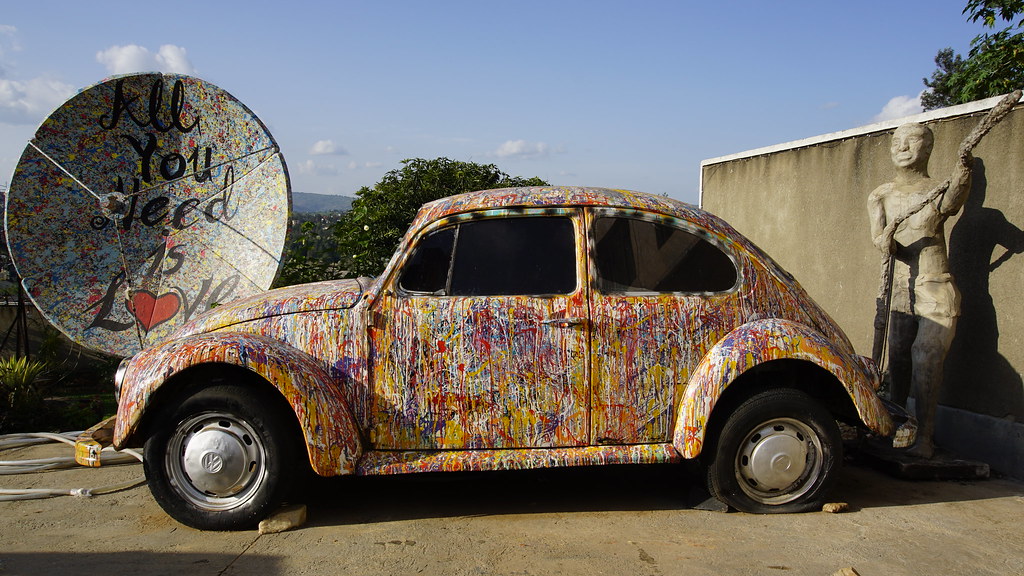Inema Arts Center’s history in Kigali
The Inema Arts Center in Kigali’s history: Rwanda’s capital, Kigali, is more than just its stunning green hills, rapidly expanding marketplaces, and recent ranking as one of Africa’s safest towns. While visiting the city’s various art attractions, particularly the Inema Arts Center, visitors may also take in Kigali’s varied culture.
An artist and businessman named Elias Ntamuhanga, who is from Rwanda, founded the Inema Arts Center in 2010. The center’s original location was in Kigali’s Nyamirambo neighborhood, which is known for its diverse population. Ntamuhanga and his spouse, Claudine, believed it was critical to create a space that would both showcase Rwandan artists and increase awareness of Rwandan art.
Inema Arts Center’s objective was clear from the start: to support Rwandan artists and their work while offering a venue that would intriguingly place Rwandan art in a global context. In 2018, the Inema Arts Center moved to a new location in the heart of the city, occupying a spacious, contemporary, and eye-catching structure that features murals by Rwandan artists as well as artists-in-progress.
A Selection of Rwandan Artists
The set The lively gallery of Inema Arts Center features a rotating program of artworks in a variety of media, such as mixed-media, painting, sculpture, and photography. It is an assortment of both modern and traditional Rwandan artworks that serve to illustrate Rwandan art and culture.
Viewing the work of the center’s resident artists is always attainable at the proposal center, which offers artists a special opportunity to hone their skills, share their ideas, and connect with art enthusiasts worldwide. In order to support the art community and offer a venue for meetings and conversations, the Inema Arts Center also hosts seminars, artist talks, annular art, and cultural events.
What people are blind to is that there is a lively tale of optimism hidden behind the Inema Arts Center’s stunning and strong structure. It tells the story of Rwanda’s social fabric as well as its history, from the terrible 1994 Genocide against the Tutsi to the country’s current ascent.
The majority of the artists who showcase their masterpieces at Inema Arts Center draw inspiration from their personal life experiences as well as their own nations’ histories. The themes of healing, reunion, and the victory of spirit over circumstance are prevalent in the majority of their artwork.
The center honors Rwanda’s leitmotif and the talent of its people, and it is more than just a gallery. It is the epitome of Rwanda’s progress. In addition to supporting Rwandan artists and the inventiveness of Inema Arts Center, it contributes to Kigali’s ever-evolving art scene for both residents and visitors.
It is imperative for each visitor to Kigali to make time to see the Inema Arts Center. Additionally, the center offers guided tours to the general public, which include educational explanations of the tales of the artwork and the messages conveyed by those works of art. Through these trips, people can fully understand and appreciate the range of art forms available in Rwanda.
We offer a café in addition to the gallery where guests can enjoy a cup of coffee and take in the center’s artistic atmosphere. Additionally, it is the ideal location for learning more about Rwanda’s history and visual arts.
One element of Kigali’s culture is the Inema Arts Center.
Being one of the most well-known art destinations in Kigali, the Inema Arts Center has played a vital role in the city. The center will keep up its efforts to promote Rwandan artists and elevate Rwandan art to a global scale as part of the future foundation for Rwandan creative growth and culture.
One encounters (different) feelings, experiences, and histories that make up the Rwandese soul while walking around the Inema Arts Center’s hallways. Your support of the center and its artists will not only benefit Rwanda’s arts sector but also contribute to the documentation of the country’s rich cultural heritage.
As a result, it is more than just a gallery or an art center where individuals may pursue careers in art; it is also Rwanda’s story and a fitting illustration of how art can transform the world. This study now makes it possible to evaluate the investigation of creativity in connection with the growth of Kigali’s arts center. Since Inema Arts Center will continue to house a large number of artists and provide opportunities for art enthusiasts to learn about Rwandan artistic expression, it will undoubtedly continue to be a symbol of Kigali’s and Rwanda’s overall growth and progress.

